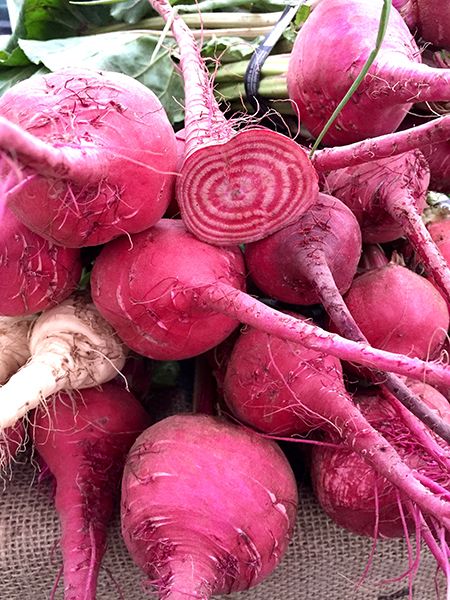It’s February in the garden, and I’m swooning. Why? Because February is the time to plant some of the veggies that I most adore. With enticing textures, bold colors, and frost-kissed sweet flavors, who could resist these garden delights?

Lovable Veggies
Sari Albornoz
Frilly veggies, how I love thee:
Have you seen asparagus when it has unfurled? After this plant’s tender spears emerge from the soil, those that are not harvested grow into a less familiar form. The spears become tall, thin, branching stems with soft, frond-like leaves. Leaving some of the spears of this perennial plant unharvested each year ensures that its root crown (network of roots) stays healthy and able to produce a harvest the following year. This also allows an elegant asparagus forest to grow and to enchant you until winter returns.
Who could look at a dill plant and not admire it? The soft, frilly, branching leaves of this delicate herb are a true treat for the eyes as well as the taste buds. With its bright and unmistakable flavor, dill can dress up an omelette, lemon-butter carrots, or a Mediterranean-style yogurt sauce. Not in love, yet? The dill plant provides the home for the magnificent Black Swallowtail Butterfly, beneficial garden insect extraordinaire.
An ode to the bright and bold:
My heart beats for beets. The best-known varieties of this root veggie are a deep crimson (which turns bright pink when cooked with potatoes or white cabbage). But the beet comes in other shades: Chioggia, with its mesmerizing concentric circles of white and red; Lutz Salad Leaf, a brilliant purple; Golden, as tropical and bright as a mango; and Albino, white as snow. Each variety has its own distinctive flavor, all mouth-watering. Beet leaves are also beautiful (green to red with veins the color of the root), and, with their slightly salty flavor, they are positively delicious when cooked like spinach or chard.
A freeze makes the flavor grow sweeter (and my heart grow fonder):
Plants can do amazing things. Carrot plants are hearty in a freeze, and react to freezing temperatures in a way that is lovely for those who eat them: they convert the starches in their roots to sugars. This means that when you pull your prizes from the ground after they’ve survived some chilly weather, you can look forward to an even more delightful reward.
Kale (along with cabbage, Brussels sprouts, and others veggies in the Brassica family) is another frost rock star. This leafy green thrives through frosts and produces sugars in freezing conditions. Sautee frost-sweetened kale with olive oil and garlic, and it will melt your heart.
Are you in love? Want to learn how to grow these dreamy veggies in your garden? Check out our spring gardening Classes in the Teaching Garden!
